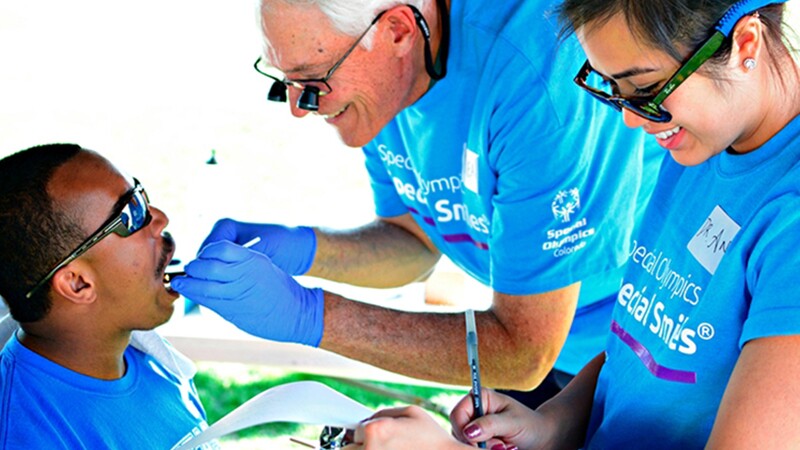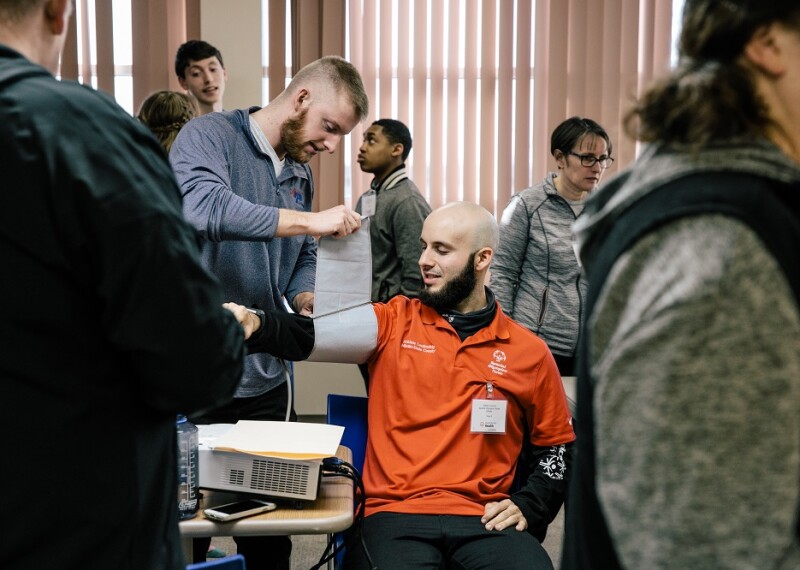
Patients with intellectual disabilities (ID) already face complications in finding and getting dental treatment. The COVID-19 pandemic has only made these challenges harder. Special Olympics chief health officer Alicia Bazzano, MD, PhD, MPH, shared her insights about these difficulties.
Q: Why is oral healthcare such a challenge for patients with ID?
A: Oral healthcare is one of the biggest unmet healthcare needs for individuals with ID. People with ID often experience difficulty with oral hygiene due to level of manual dexterity or cognition, have a greater prevalence of dental caries and periodontal disease, and face substantial barriers accessing dental care.
Also, they often have other chronic conditions and comorbidities (such as diabetes, hypertension, and heart disease) and may take medications that exacerbate their oral health issues. They suffer from sleep apnea and experience oral trauma and injury more often than the general population. They commonly rely on others for help with brushing and flossing.
On top of all of these concerns, patients with ID and their families often report extreme difficulty finding dentists who understand their needs and feel comfortable welcoming them into their practice for treatment.
Q: What are some of the more effective strategies for providing care to this patient population?
A: A patient-centered approach to care must be taken when working with people with ID. Providers should ensure they are communicating in an appropriate mode and at a level that the patient understands. All services and procedures should be explained in plain language to the patient.
Preventive practices such as regular cleanings and fluoride application at intervals appropriate to the individual’s level of risk, as well as the twice daily use of fluoride toothpaste when brushing, are important for those with ID just as with others. Patients may benefit from the use of an electric toothbrush or an adaptive device, such as brushes with modified handles or multiple toothbrush heads, to help them brush effectively.
Q: What effect has the coronavirus had on this population, in terms of their general health?
A: People with ID are a high-risk population for COVID-19 and for its complications. Although more data is needed, one study in New York indicates that people with ID, especially in group homes or congregate settings, have five times the rates of COVID-19 transmission and five times the death rate as the general population.
In addition to the possibility of contracting coronavirus, people with ID, just like everyone else, are feeling isolated, they are having less social interaction, they are experiencing substantial changes in routine, and they may be forgoing preventive health and hygiene measures such as brushing and flossing while at home.
There are concerns with less physical activity and more availability of snacks at home leading to weight gain and poor nutrition, less sun exposure leading to osteoporosis, and poor eye health due to reductions in vitamin D, all in a population already at risk. The stress, isolation, and lack of structure may lead to behavioral challenges such as self-injurious behavior and aggression as well as neglect and abuse.
Q: How has the coronavirus impacted their oral health specifically?
A: Many patients with ID have comorbid conditions, which put them at a higher health risk for COVID-19. Social distancing regulations, while absolutely necessary for preventing the spread of COVID-19, present unique challenges for those with ID who may rely on others for support in self-care.
Caregivers such as family members and direct support professionals may not feel properly protected and may therefore be hesitant to assist with activities like brushing due to the close contact and aerosol-generating possibility of these activities.
During this time, it is imperative that dental providers communicate with their patients and families, reminding them of the importance of daily oral hygiene. These preventive efforts will help keep patients’ mouths healthy and pain-free and will minimize the need for care in high-exposure settings.
Q: How do the definitions of urgent and emergency care apply to this population?
A: The definitions of urgent and emergent dental care apply to those with ID as they do to all patients. Severe tooth pain, dental trauma, fever, and swelling exhibited by those with ID require prompt attention, just as they do for everyone else. Sometimes, those with ID do not communicate their pain or other symptoms in a manner others understand easily. It is important for providers to have an open mind when taking patient histories for individuals with ID.
Some individuals with ID require care under sedation or general sedation in an operating room setting. Offering this type of care may be challenging over the months and years to come in many parts of the country due to demands on hospitals and ever-expanding infection control regulations. However, when urgent or emergent care needs arise, it is imperative that providers advocate for their patients to receive the care necessary.
Q: What strategies should dental professionals employ to still provide oral healthcare during these times?
A: OSHA, CDC, and state level regulations must be adhered to when we get back to our offices and practices in order to keep our staff and our patients safe. As we implement measures to reduce aerosolization and droplet spread in our undeniably high-exposure settings, it is increasingly important to consider less invasive treatment and caries-arresting modalities, such as silver diamine fluoride, atraumatic restorative techniques, and the use of fluoride-releasing glass ionomers. Stopping the progression of cavitation may save the tooth from a root canal or extraction. Careful inspection of the teeth should be done regularly for any broken teeth, bleeding gums, or swelling.
Many offices across the country have implemented teledentistry to triage patients. The ability to utilize technology to consult, screen, and even examine patients will prove increasingly useful. We must continue to offer oral health education, nutritional counseling, and assist patients and families with other oral health related concerns, but perhaps this education and communication will be taken to the phone lines or via internet connection.
Additionally, there is a critical need to equip direct support professionals and caregivers with information and strategies to maintain oral health at home. We must continue to remind patients, families, and caregivers that the mouth is connected to the body and that taking care of their oral health will improve their overall health.


